“With continuous boring, this tunnel developed sufficient water by 1897 to warrant a supply main from the tunnel to the city. Civic leaders found the pulse of industry quickening in ratio to the increased water supply.”
–Santa Barbara: A Guide to the Channel City and Its Environs (1941)
On the west fork of Cold Springs Creek in the mountains behind Montecito, near where the trail leading down from Gibraltar Road crosses the creek there, the old Cold Spring Tunnel can be seen. It was Santa Barbara’s first municipal or city-owned water supply and its successful completion led to the construction of Mission Tunnel, which delivers water through the Santa Ynez Mountains from Gibraltar Reservoir. The tunnel marks a crucial point of progress in Santa Barbara’s history.
The warmth and dryness of Santa Barbara’s semi-arid climate had long been an attractive feature of the region, but it also posed a great obstacle to the city’s growth. The sun reflects off the Pacific baking a south facing littoral plain that receives on average about 18 inches of rain annually. The inevitable dry spell meant rainfall could be less than half that.
A catastrophic drought in 1863-64 altered the course of history, as sprawling cattle ranches failed and animal bones piled up near dried up water holes. The ranchos were cut up into smaller parcels, which eventually helped attract and provide land for new settlers, but a steady and reliable supply of water continued to be a problem.
The old Mission aqueduct system built in 1806 provided sufficient water late into the nineteenth century. By 1887, however, the aqueduct, along with the historic De La Guerra Wells no longer supplied enough water to quench the demand of a growing population. That same year, the first train rolled into Santa Barbara and connected the small seaside town with the outside world in a revolutionary new way promising even greater growth and need of water. To solve the problem, the city tapped the Santa Ynez Mountains and effectively turned the sandstone studded, chaparral shrouded eminence into a natural reservoir.
In 1896, Eugene S. Sheffield, for which Sheffield Reservoir was named, suggested to city officials that a tunnel be bored into the mountains, which would provide plenty of water through natural seepage and without need of pumping. “Engineers agreed,” Walker A. Tompkins writes, “that the mountain wall was a huge, untapped lithic sponge of porous sandstone collecting and storing winter rains.” Poke a hole in the mountain, the reasoning went, and the water would naturally flow out.
Charles E. Harding of Carpinteria put in the winning bid to construct the tunnel and in 1897, bored to a depth of 5000 feet, it began supplying water to the city. A plug, to put it simply, was secured in the tunnel, which brought control of the water flow and turned the mountain into a giant hydrogeological town water cooler.
At some point several years later, contractors F. S. Smith and E. J. Hunt fashioned a concrete facade for the old Cold Spring Tunnel, as seen in the photo below. Smith and Hunt were the contractors that bored the southern portion of Mission Tunnel starting in 1904, which eventually tapped the reservoir created with the completion of Gibraltar Dam in 1920.
Bibliography:
The Yankee Barbarenos: The American Colonization of Santa Barbara County, California 1796-1925, Walker A Tompkins (Movini Press 2004)
Santa Barbara: A Guide to the Channel City and Its Environs, Southern California Writer’s Project of the Works Projects Administration (Hastings House 1941)
Related Posts:
Tangerine Falls, Cold Springs Canyon








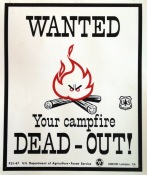

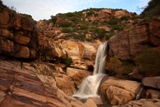
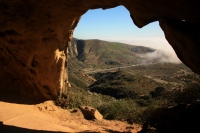

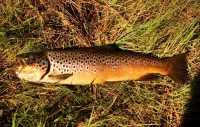
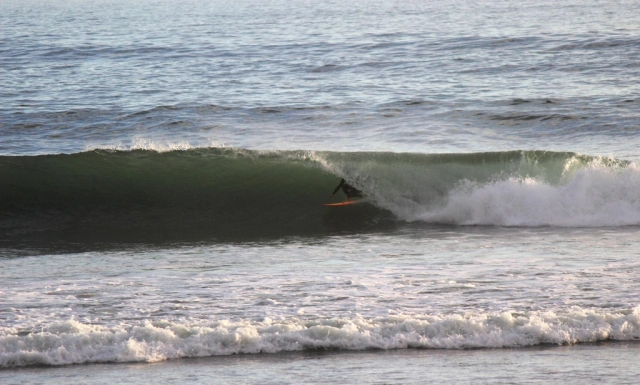
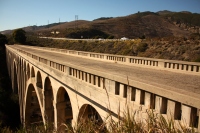
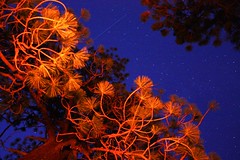








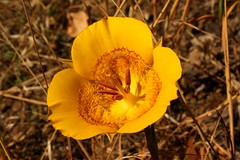









Dear Jack,
I am wondering why you do not even respond to me email messages?
Rick.
Cold Springs is a great hiking area! I hear they want to close it down though for renovations to the land and build on it which would be a sad shame. It’s a great hike in a beautiful area. Hiking in Santa Barbara is a one of my favorite things to do when vacationing in town!
I had no idea Cold Springs Trail had so much history to it. I’ve done this trail multiple times with friends who live in the area and it is such a great hike. To the comment above, I’m not too sure the city would allow such a popular hiking trail to be sold to just anyone, if anything they’ll buy it and keep the land open to the public. If not it would be a real shame to see it go to development. I’m there so much for business but I always find time to get in a quick hike or run. Love the outdoors in Santa Barbara. I have to go back in April and hopefully there is no rain so I can get out!
who currently uses the water collected from this tunnel… why isn’t some water released to keep the endagered steelhead alive?
The water from this particular tunnel flows right into the creek.
Cold Springs is one of my favorite trails to do in Santa Barbara and by far one of the hardest (at least in my opinion). That straight up hill incline gets me every time! Regardless, this is a very informative blog that has a lot to say on the historical trail ( I had no idea!!). Now the next time I hike it I’ll be more informed to what I am actually trekking up!
Does the hotel you work for advise you to spam people’s websites with thinly veiled attempts at promoting and marketing their business? Or is this something you have taken upon yourself to do? Either way, you’re not fooling anybody with your dishonest comments. I edited out your reference to your employer’s name and website address.